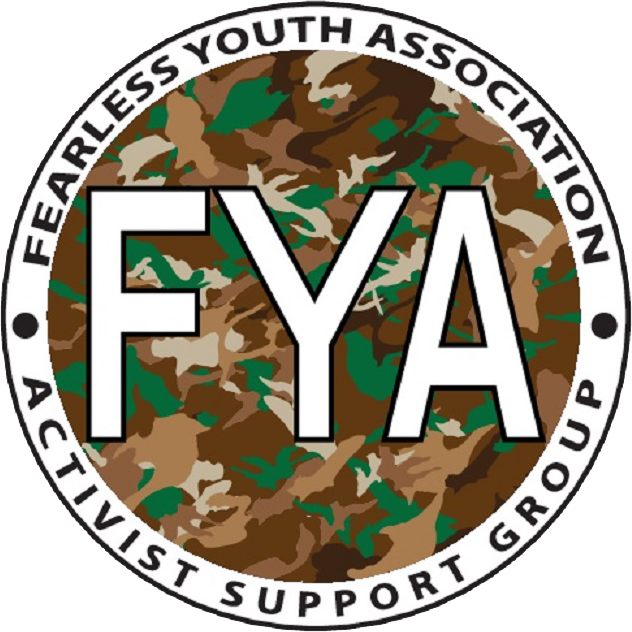Action for Race Equality works collaboratively with Black, Asian and Mixed heritage-led organisations to strengthen the community and voluntary sector and improve outcomes across education, employment and criminal justice. As part of our drive, we’re proud to actively spotlight organisations, individuals, initiatives and campaigns that share our mission to advance race equity in the UK.
Estimated read time: 5 minutes
In this spotlight, Bowale Fadare, Policy and Research Officer, had the pleasure of interviewing Ann Waruga, Creative Arts Coordinator at Fearless Youth Association (FYA), a Black-led youth charity that works with young people from Black, Asian and Mixed Heritage communities.
FYA supports young people in the Criminal Justice system (CJS) and helps them refrain from involvement in youth and gang violence, and they envision a future where every young individual is prepared to flourish and is empowered to make meaningful contributions throughout their journey.
Their work is focused on creating a sense of belonging, building confidence and social skills, and offering positive alternatives to street violence, particularly for those not in education, employment, or training.

FYA, as a nonprofit organisation, envisions a future where every young individual is prepared to flourish and is empowered to make meaningful contributions throughout their journey.
If you had to summarise what you do, what would you want to get across?
We actively engage and support young people, primarily from Black, Asian and Mixed Heritage backgrounds, helping them to refrain from knife crime, youth, and gang violence, and empowering them to become active, confident, and responsible citizens.
Why or how did you get involved in the Criminal Justice System (CJS) and what does this work mean to your organisation?
We became involved through a referral agreement with East Midlands Probation Service.
As a specialist youth focused organisation, we directly engage with young people who have been in prison for knife related crimes. Their experience informs our other youth outreach activities.
Could you briefly outline your key aims and objectives, and vision for the future and how your work feeds into improving the CJS?
- We support young people who are not in education, employment, or training to help them feel a sense of belonging, learn from each other, and build confidence and social skills.
- Through advocacy and digital skills- building, like our Media Literacy course, we engage young people from disadvantaged backgrounds to keep them away from street violence.
- We work with young people supported by police community safety teams and the city council, as victims of knife and hate crime, to become confident and involved in our work to tackle crime and anti-social behaviour.
- Our vision is every young individual is prepared to flourish and empowered to contribute meaningfully.
Although, the CJS deals with young people known to them for crime related law violations, a more proactive engagement with young people ‘on the edge’ is by funding organisations like ours on a sustainable basis to help young people navigate the bridge to violence-free outcomes.
As a ‘led by and for’ organisation, what is the biggest challenge working in this space, how do you overcome it and why is this work important?
The biggest challenge is short-term and time-bound funding, which results in unsustainable youth support initiatives.
Organisations that are directly involved in the CJS can identify and better understand law violations so tailor information and approaches accordingly.
What have been milestones or successes of which you are proud of?
Through our referral partnership, we provided tailored support to a young person who was initially uncooperative. After knife crime awareness training, we supported him to acquire and stay in a job.
If you could identify one or two people who could really make a difference in improving the CJS, who are they and why?
The Home Secretary and community leaders have the power to shape national policies and understanding the realities of people can help shape better ways to run the system.
How do you think intersectionality arises in your work and in the CJS as a wider system?
The young people we support are not in education, employment or training and experience multiple disadvantages which increases their likelihood of being targeted by police and victimised.
How has your work impacted your understanding of Black, Asian and Mixed Heritage young people and the criminal justice system, and what misconceptions have you come across?
Black, Asian and Mixed Heritage young people becoming involved in the CJS intersects with tackling broader social inequalities and unconscious biases in policies that have discriminatory results.
Racism is often unconscious and micro aggressions, rather than open and blatant. It is harder to point out in modern spaces.
Why do you think the CJS has been difficult to reform?
It is a challenging environment because the CJS is fragmented; a change in one area is undermined by a lack of or aversion to change in another area.
What do you make of the term ‘Two tier policing’ to describe British policing?
Two-tier policing exists. Black and minority ethnic groups are treated unequally when it comes to use of force. The threat of police violence and force cuts across race, class, and gender lines.
Being on the frontlines, how does the organisation ensure the wellbeing of its staff?
We have robust safeguarding policies, staff manuals and ongoing risk assessments. Staff receive support, capacity, and space to undertake tasks and raise concerns which is swiftly remedied.